Unveiling the Majestic Size of Jaguars: From Impressive Dimensions to Powerful Physique
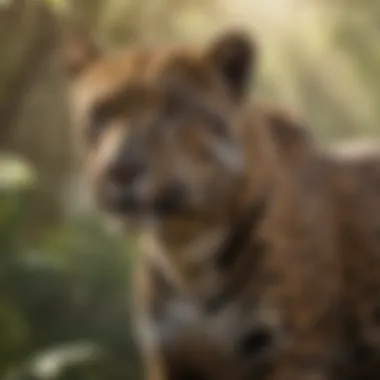

Nature Topic Overview
Fun Facts and Trivia
- Jaguars possess the strongest bite force of any big cat species, enabling them to crush the skulls of their prey effortlessly.
- The iconic rosette patterns on a jaguar's fur are not just beautiful but also help them blend seamlessly into their forest surroundings, aiding in stealthy hunting.
- Despite their size, jaguars are incredibly agile climbers and proficient swimmers, making them versatile predators within their ecosystem.
Wildlife Explorations
Delve into the intricate web of the rainforest ecosystem, where jaguars reign supreme as top predators. Understand the symbiotic relationships they share with other species, from capybaras to tapirs, showcasing their vital role in maintaining ecological balance. Take a virtual safari to witness these majestic felines in their natural habitat through interactive simulations and quizzes.
Environmental Awareness
The conservation of jaguars is paramount to preserving biodiversity in the jungles they inhabit. By raising awareness about the threats they face, such as habitat loss and poaching, we can instill a sense of responsibility in the next generation to actively participate in wildlife conservation efforts. Discover practical tips on creating backyard habitats that promote coexistence with nature, fostering a culture of sustainability and respect for all living beings.
DIY Nature Activities
Engage young conservationists through hands-on activities that illuminate the wonders of the natural world. From building cardboard jaguar models to creating mini rainforest terrariums, children can immerse themselves in imaginative projects that inspire a love for wildlife. Encourage outdoor explorations that encourage curiosity and observation skills, nurturing a sense of stewardship for our planet's precious ecosystems.
Introduction
Jaguars, magnificent felines known for their impressive size and strength, hold a significant place in the diverse ecosystem. Understanding the dimensions of these majestic creatures is crucial in deciphering their role in the animal kingdom. By delving into the physical attributes and proportions of jaguars, we unravel a world of awe-inspiring details that showcase their uniqueness and dominance.
Brief Overview of Jaguars
Historical Background
The historical background of jaguars traces back through time, revealing a legacy of resilience and adaptability. Embedded within the narratives of ancient civilizations and revered by indigenous communities, the jaguar's historical context offers insights into its enduring symbolism and cultural significance. Despite challenges over centuries, the jaguar's presence in mythologies and legends persists, underscoring its exceptional status in the natural world.
Habitat and Distribution
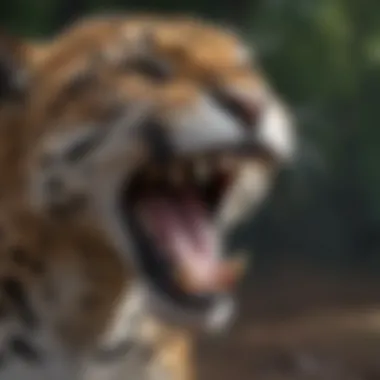
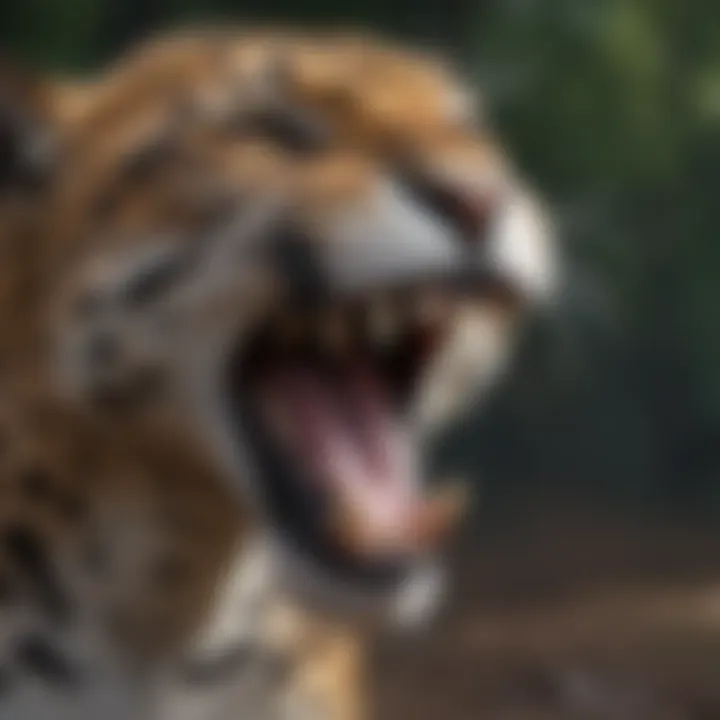
Jaguars, inhabitants of diverse ecosystems ranging from dense rainforests to expansive grasslands, showcase adaptability in the face of habitat variation. Their distribution across South and Central America emphasizes their ability to thrive in diverse environments, marking them as versatile predators with a wide geographic reach. Understanding the intricacies of jaguars' habitats and distribution patterns unveils the crucial link between environment and survival strategies, highlighting the delicate balance of nature.
Importance of Understanding Jaguar Size
Ecological Role
The ecological role of jaguars transcends mere size considerations, delving into their impact on local ecosystems and biodiversity. As apex predators, jaguars regulate prey populations, influencing the dynamics of food chains and promoting overall ecosystem health. By comprehending the size dimensions of jaguars, we gain a deeper appreciation for their ecological significance and the intricate ecological web they sustain.
Comparison with Other Big Cats
Comparing jaguars with other prominent felids provides a nuanced perspective on their size-related adaptations and behavioral characteristics. Contrasting jaguars with larger big cats like tigers and lions unveils distinct evolutionary pathways and predatory strategies, shedding light on the adaptive features that make each species unique. Through comparative analysis, we elucidate the evolutionary advantages that have shaped jaguars into formidable hunters in their respective habitats.
Physical Characteristics of Jaguars
Jaguars are revered for their remarkable physical attributes, which play a pivotal role in their survival and ecological significance. Understanding the physical characteristics of jaguars is essential in unraveling their place in the animal kingdom. Their body structure, muscular build, and adaptations for hunting are prime features that distinguish them from other big cats.
Body Structure
The muscular build of jaguars is a defining aspect of their physical prowess. Jaguars boast a sturdy physique, characterized by powerful muscles that enable them to excel in various activities ranging from hunting to climbing. This muscular build contributes significantly to their agility and strength, making them formidable predators in their habitats. The unique feature of their muscular build lies in the compactness and efficiency of their muscle fibers, allowing for quick bursts of speed and unmatched predatory skills. While this muscularity provides them with advantages in both speed and power, it also demands high levels of energy and constant maintenance through hunting and physical exertion.
Adaptations for Hunting
In the realm of adaptations for hunting, jaguars exhibit a blend of physical traits tailor-made for capturing prey. Their strong jaws equipped with sharp teeth and robust neck muscles enable them to deliver precise and lethal bites to subdue their targets. Notably, jaguars have adapted to ambush their prey using stealth and cunning strategies, taking advantage of their muscular limbs for stealthy movements and sudden bursts of speed. The unique feature of their hunting adaptations lies in their ability to climb trees effortlessly, giving them the advantage of pouncing on unsuspecting prey from above. While these adaptations enhance their hunting prowess, they also pose challenges in terms of energy expenditure and the risks associated with engaging large and potentially dangerous prey.
Size Measurements
When dissecting the size measurements of jaguars, it becomes evident that their dimensions are crucial in determining their hunting capabilities and overall survival. The average length of a jaguar serves as a vital metric in assessing their physical reach and maneuverability. Their compact build allows for agility in navigating through dense vegetation, a necessary skill for stalking prey in their habitats. Despite their average length, jaguars exhibit a wide weight range that varies based on factors such as age, sex, and available food sources. This weight range impacts their hunting techniques and ability to take down prey of varying sizes, demonstrating the adaptability of these creatures. Additionally, the height at the shoulders of jaguars influences their stalking techniques and predatory behavior, dictating their posture during hunts and confrontations with rivals or threats. Understanding these size measurements is key to comprehending the ecological niche jaguars occupy and their role in maintaining the balance of their ecosystems.
Factors Affecting Jaguar Size
In exploring the size dynamics of jaguars, comprehending the factors that influence their size becomes imperative. This section delves into the intricate web of elements that contribute to the varying sizes of these majestic felines. Factors such as genetics and the environment play a crucial role in determining the size potential of jaguars. By understanding these influences, we can unravel the mysteries behind the diversity in the sizes of these big cats. This examination offers a deep dive into the interplay of biological inheritance and external surroundings, shedding light on how these elements shape the physical dimensions of jaguars.
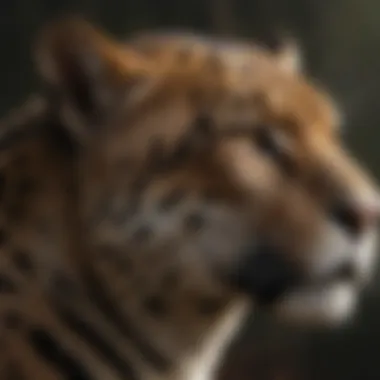
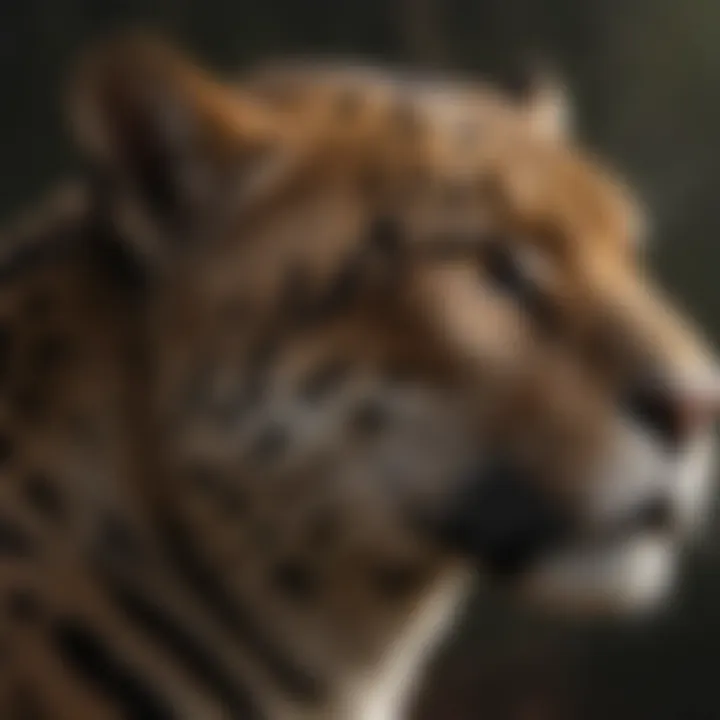
Genetics and Environment
Influence of Genetics
When dissecting the conundrum of jaguar size, genetics emerges as a prominent player in this intricate narrative. The influence of genetics on the size of jaguars is profound, with hereditary traits dictating the potential for growth and development. Certain genes encode for characteristics that impact the size of jaguars, showcasing the complexities of inherited traits. Understanding the nuances of genetic inheritance provides valuable insights into the size variations observed within the jaguar population. Although genetics set the blueprint for size potential, environmental factors undoubtedly influence the expression of these genetic traits, further complicating the landscape of jaguar size determination.
Impact of Habitat
The habitat in which jaguars reside exerts a significant impact on their size dynamics. The availability of resources, space, and prey in the habitat directly influence the growth and development of jaguars. Habitat quality and environmental conditions play a crucial role in shaping the physical attributes of these big cats. Jaguars adapt to their surroundings, and this adaptation reflects in their size variations across different habitats. Factors such as food availability, climate, and territorial range interact with genetic predispositions to produce the diverse sizes observed among jaguars worldwide. Understanding how habitat intricately weaves with genetics unveils a holistic view of the influences governing jaguar size variations.
Nutrition and Health
Role of Diet
Diet stands as a cornerstone in the discussion on jaguar size. The nutritional intake of jaguars directly impacts their growth, muscle development, and overall body size. A well-balanced diet rich in proteins and fats is vital for supporting the muscular build characteristic of jaguars. Variances in diet composition can lead to size variations among jaguars, highlighting the importance of nutritional resources in the wild. By examining the role of diet in jaguar size determination, we gain insight into the dietary requirements essential for fostering healthy growth and development in these magnificent predators.
Health Conditions
Health conditions also play a pivotal role in influencing the size of jaguars. Disease, injury, and physiological ailments can hinder growth and development in these predators, impacting their overall size potential. Understanding the prevalence of health conditions among jaguars offers crucial insights into the factors that may restrict optimal growth. By addressing health concerns and ensuring the well-being of jaguars, conservation efforts can safeguard the size diversity within the jaguar population, underscoring the significance of health in sustaining robust populations of these magnificent felines.
Comparative Analysis
In delving into the size characteristics of jaguars, a comparative analysis sheds light on the distinctive features that set them apart from other large cats. Understanding how jaguars measure up against their big cat counterparts like tigers and lions provides valuable insights into their ecological niche and evolutionary adaptations. By closely examining the size differences and unique traits of jaguars in comparison to other prominent felines, we can grasp the broader implications of these majestic creatures within the animal kingdom.
Versus Other Large Cats
Comparison with Tigers
Comparing jaguars with tigers unveils intriguing contrasts in size, markings, and habitat preferences. Jaguars, known for their robust build and impressive strength, differ from the sleek agility of tigers. Jaguars possess a stockier frame and shorter limbs, enabling them to excel in grappling with large prey items. The notable characteristic of jaguars' mesmerizing rosette patterns distinguishes them from the striped coats of tigers. This comparison enhances our understanding of how these two apex predators have adapted to thrive in diverse environments, shaping their predatory strategies and interactions within their ecosystems.
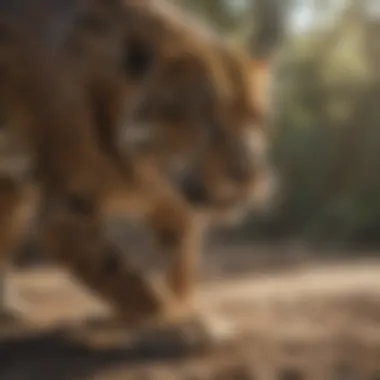
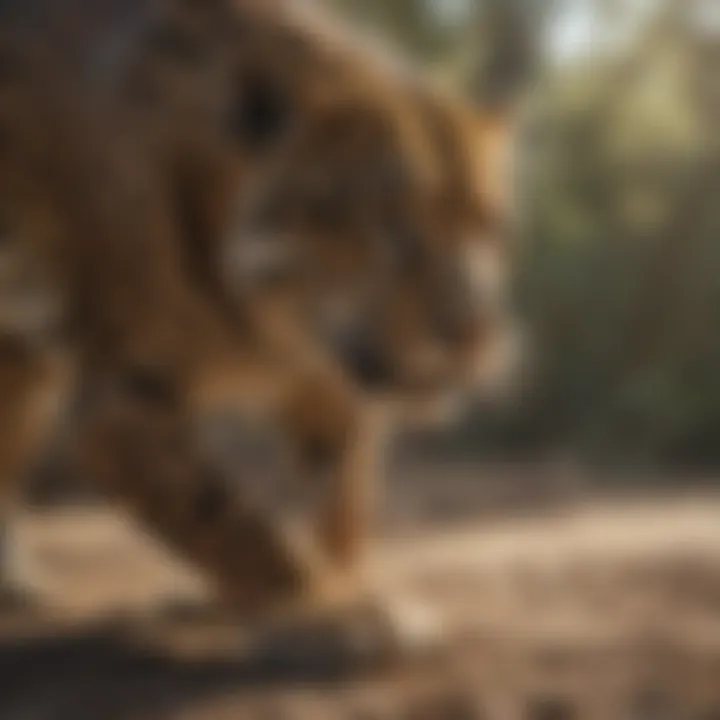
Contrast with Lions
Contrasting jaguars with lions underscores the variances in social structure, hunting techniques, and physical attributes. Jaguars, solitary in nature, excel in stealthy ambushes due to their muscular build and agility, contrasting with the cooperative hunting nature of lions. Jaguars' preference for dense forest habitats contrasts with the wide-ranging territories of lions across African savannas. Exploring the contrasts between jaguars and lions elucidates how each species' size, behavior, and adaptations are tailored to their specific environments, highlighting the intrinsic relationship between an animal's size and its survival strategies.
Size Variations Within the Species
Regional Disparities
Analyzing regional disparities in jaguar sizes reveals fascinating adaptability and ecological influences on these elusive cats. Jaguars inhabiting dense rainforests exhibit smaller body sizes compared to those in open savannas or scrublands. This variation in size is a testament to the adaptability of jaguars to diverse habitats, where factors like available prey species and climate conditions play a crucial role in shaping their physical dimensions. By exploring the regional disparities in jaguar sizes, we gain a deeper appreciation for the nuanced interplay between environmental factors and the morphological adaptations of these enigmatic predators.
Gender Differences
Examining gender differences in jaguars unveils intrigu -ling behavio ural and physiological dimens om of these magnific predators. Male jaguars about 20% larger than their female counterparts, enablingf to tak on larger prey nd domi ate larger territories. Female jag ars, while s arer i size, exude efficiency in rearing offspring an navigating complex si al nd ded relationships. Exploring the gend differ omens in jaguars offers insights int e reproductive biology, social interact ns, and sur ical strategies of these ustrious felines, enhan in our unders standing of their significance ithin the animal kingdom.
Significance of Size in Jaguar Behaviour
In the realm of jaguars, the significance of size plays a crucial role in determining their behavior and ecological interactions. The size of a jaguar influences various aspects of its life, from hunting strategies to reproductive success. A larger jaguar may have an advantage in dominating its territory and securing access to resources, while a smaller one may need to exhibit different behaviors to compensate for its size. Understanding the significance of size in jaguar behavior provides insights into the dynamics of their ecosystem and sheds light on the intricacies of predator-prey relationships.
Predatory Behavior
Hunting Strategies
Hunting strategies employed by jaguars are a testament to their adaptability and efficiency as apex predators. Stealth and ambush are key components of jaguar hunting tactics, allowing them to surprise and overpower their prey with precision and speed. Their muscular build and sharp teeth aid in delivering swift and lethal attacks, ensuring successful hunts. Jaguars are known for their ability to take down large prey with calculated strategies, showcasing their intelligence and hunting prowess.
Prey Selection
Jaguars exhibit selective behavior when it comes to choosing their prey, often targeting larger animals that provide substantial nutrition and energy. This selective predation not only sustains the jaguar population but also maintains a balance in the ecosystem by controlling the population of certain species. Their keen sense of observation and strategic approach to prey selection contribute to their survival and reproductive success, showcasing their role as key regulators in their habitats.
Reproductive Patterns
Mating Rituals
The mating rituals of jaguars are influenced by their size and social dynamics, with larger individuals often dominating mating opportunities. Courtship displays involve intricate vocalizations, territorial markings, and physical interactions, demonstrating the significance of size in asserting dominance and attracting mates. Larger males have a competitive advantage in securing breeding rights, leading to a higher likelihood of passing on their genes to the next generation.
Impact on Offspring
The size of jaguars plays a vital role in determining the health and vitality of their offspring. Larger females tend to produce healthier cubs with higher chances of survival, thanks to genetic traits passed down through generations. Size influences the growth rate and development of jaguar cubs, shaping their ability to thrive in various environments. Understanding the impact of size on offspring provides valuable insights into the reproductive success and adaptive strategies of jaguars in the wild.







